America’s ‘Young America’ movement, the Scottish Rite and the Knights of the Golden Circle
The French Connection: The Knights of Malta, the Scottish Rite & the Rise of the Mafia Brotherhoods Part VII
“Men are but the automata of Providence, and [Providenae] uses the demagogue, the fanatic, and the knave…as its tools and instruments to effect that of which they do not dream, and which they imagine themselves commissioned to prevent …”
“The Blue [or lower] Degrees are but the outer court … of the Temple. Part of the symbols are displayed there to the Initiate, but he is intentionally misled by false interpretations. It is not intended that he shall understand them, but it is intended that he shall imagine he understands them. Their true explication is reserved for the Adepts, the Princes of Masonry...”
“Magic is the science of the ancient magi.. Magic unites in one and the same science, whatsoever Philosophy can possess that is most certain, and Religion of the Infallible and the Eternal. It perfectly … reconciles these two terms… faith and reason … those who accept [magic] as a rule may give their will a sovereign power that will make them the masters of all inferior beings and of all errant spirits; that is to say, will make them the Arbiters and Kings of the World….”
- Albert Pike, Morals and Dogma of the Ancient Accepted Scottish Rite of Freemasonry (1871)
[This is Part VII of this series. Refer here for Part I, Part II, Part III, Part IV, Part V and Part VI]
Recall in Part IV of this series “The Birth of the Modern Templars, the Origins of the Ancient Scottish Rite and the Roman Sun King Napoleon” Napoleon’s connection to the Scottish Rite.
Napoleon’s arch-chancellor, Cambacérès, was appointed Grand Master Adjunct. Gradually all the freemasonic rites existing in France gave in their allegiance to Napoleon’s imperial policy, and he elected Cambacérès as the chief dignitary of all French freemasonic lodges, so that he eventually possessed more masonic titles than any other man before or after him. Among these titles were ‘in 1805, he was made Grand Master Adjunct of the Grand Orient; in 1806, Sovereign Grand Master of the Supreme Grand Council; in the same year, Grand Master of the rite of Heroden of Kilwinning; in 1807, Supreme Head of the French rite; in the same year, Grand Master of the Philosophic Scotch rite; in 1808, Grand Master of the order of Christ; in 1809, National Grand Master of the Knights of the Holy City; in the same year, Protector of the High Philosophic Degrees.’[6]
Jacques Cheminade writes in his paper on Napoleon:[7]
“Napoleon' s older brother, Joseph, had joined-on Oct. 8, 1793 - Marseilles' s lodge of "Perfect Sincerity," Scottish Rite, under portraits of Jean-Paul Marat and Jean-Jacques Rousseau, with the protection of Robespierre' s brother, Bon-Bon. Louis, another of Napoleon' s brothers, had also joined a Scottish Rite lodge. Both of Napoleon' s brothers were members of the Scottish Rite, and although there is no definite proof, it seems that Napoleon himself was also a "brother," because his son, the Eaglet, appears in various documents as the loweton, the son of a mason.
But, there is something much more interesting: Admiral de Grasse Tilly, son of Admiral de Grasse, whom Valery Giscard d' Estaing claimed to be a descendant of, was initiated into the Lodge St. John of Scotland, of the Social Contract, in Paris. He was later caught by the British, brought to Jamaica, then released in the United States, and came back to France, with the title of Sovereign Grand Commander of the Scottish Rite, delivered by the Supreme Council of Charleston. Charleston, the cradle of the Scottish Rite U.S.A., the B'nai B'rith, and the "Confederate Masonry"! He founded, then, the Grand Scottish Lodge of France, and became Venerable of the Saint Napoleon Lodge in Paris! A lot of lodges were then named after Napoleon or Josephine (la Reale Giuseppina).
In early 1804, Joseph [Napoleon’s brother] became Grand Master of the Grand Orient, the French masonic discipline.
In November 1804, Louis, the other syphilitic brother, became Grand Master of the Scottish Rite, even if he was, by then, Vice-Grand Master of the Grand Orient. But Napoleon liked order, and on Jan. 6, 1806, the two lodges-the Grand Orient and the Scottish Lodge-united, with Prince Joseph as Grand Master and Prince Louis as Vice-Grand Master! Murat, on his side, was proclaimed Grand Master of the Grand Orient of Naples, in 1809. He started an intensive relation with his "brother" Metternich and his friend (and "brother") Fouché, Napoleon' s policeman.
The reunification of the two lodges appears, on the surface, as a submission of the Scottish Rite Lodge to the Grand Orient, but, at a deeper level, it is a penetration of the Scottish Rite into the Grand Orient: from London, to Charleston, to the Grand Orient-a great venereal disease!
It is these lodges that were organized as the military network of the Empire, to celebrate victories and looting. All prominent French generals were members-Murat, Bemadotte, Massena…
The key operative in all this, together with Fouché-formerly promoter and executor of Robespierre-was Jean-Jacques Cambacérès, Napoleon' s justice minister, who had originated in the Scottish Rite, and was the most notorious sodomite in Paris.”
This connection between London and Charleston via the Scottish Rite is key to understanding how these networks infiltrated the United States, with the Bonaparte family playing an essential role including the formation of America’s Secret Police, the FBI, along with the Sicilian Mafia - this will be discussed especially in relation to their involvement with the Confederates during the US Civil War.
It is here that we will resume our story.
Lord Shelburne’s New Rome
In order to understand how freemasonry operated in the United States from the 19th century onwards, one must have an understanding of the Scottish Rite, which effectively took over all freemasonic organizations by the 1830s.
The Scottish Rite was formally organized in the U.S. in 1801, as a group of Tory partisans on the losing side of the American Revolution. One of the principal men involved from the very beginning was a British general by the name of Augustine Prevost. Prevost had conquered Charleston, South Carolina, and set up a secret police apparatus there which became the Scottish Rite headquarters, after the British Army left.[8]
Augustine Prevost (1723-1786) had left Geneva, Switzerland in the 1750s to enter the British service along with his two brothers James Marcus and Jacques Prevost. They had been army officers in the French and Indian War (1754-1763) a theater of the Seven Year’s War.
The Prevost family in Geneva were hereditary members of the ruling Council of 200 (Genoa had a Doge system similar to that of the Republic of Venice), the “Committee of Europe’s Spymasters”, which were the legislative authorities in four Swiss cities (Zürich, Bern, Fribourg, Basel), as well as in the independent Republic of Geneva prior to the French Revolution. In England and in Switzerland, the Prevosts were intermarried with the Mallets; and became the Mallets-Prevosts.[9]
It should be noted here since Corsica is the birthplace of the Corsican Mafia which was at the center of international heroin production and trafficking in the 20th century, that Corsica was under the rule of the Republic of Genoa’s Empire for five centuries.
Despite take-overs by Aragon between 1296–1434 and France between 1553 and 1559, Corsica would remain under Genoese control until the Corsican Republic of 1755 and under partial control until its purchase by France in 1768.
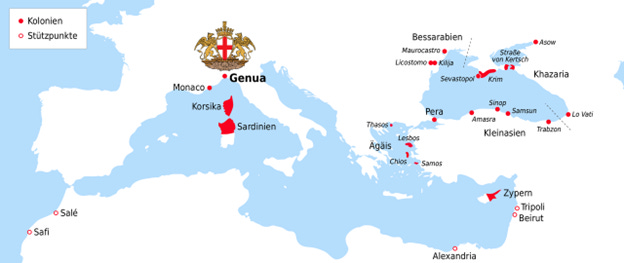
Anton Chaitkin writes in Treason in America:[10]
“British Major General Augustine Prevost is still remembered today in South Carolina as the ‘filthy’ enemy commander during the American Revolution, whose largely Loyalist troops looted and maliciously destroyed the homes and farms of residents in wide areas of that state. Augustine Prevost and his brother, Colonel James Marcus Prevost, were responsible for the recruitment of the largest force of Crown Loyalists used in the British war effort.
…As we have seen in earlier chapters, these Prevosts of Geneva represented the very highest levels of British-Swiss alliance forming the British Secret Intelligence Service. When Colonel James Prevost [1736-1781] died, Aaron Burr [1756-1836] married his widow, adopted his children, and took his place in the family and the British Secret Service. The substantial Tory element in South Carolina would serve Burr and the Prevosts as a fertile recruiting ground for political-conspiratorial activities after the Revolution, under the overall coordination of the supervisor of Loyalist affairs, Secret Intelligence chief Lord Shelburne.”
Recall from Part VI of this series “The British Origins of the Jacobins, Mafia Godfather Mazzini and the Rise of the Young Europe Cults” that Jeremy Bentham had been the one to write the actual speeches of the leaders of the Jacobin Terror, Jean-Paul Marat, Georges Jacques Danton, and Maximilien de Robespierre. And that the records of East India Company payments to these leading Jacobins are still on file at the British Museum.
Thus, the leaders of the Jacobins not only had their speeches written by Jeremy Bentham but were salaried by the British East India Company! It was none other than Lord Shelburne who had been responsible for employing Bentham in this role, ‘a man who at the time was the de facto, if not de jure doge of Britain.’[11]
Bentham is well known for his suggestion of a procedure for estimating the moral status of any action, for which he created the hedonistic or felicific calculus. This hedonistic calculus was to be used as the principle of utility, or “the greatest happiness principle” such that any action one was to take in life to serve a utilitarian, moral purpose was to be measured through that individual’s seeking out of pleasure.
By Bentham’s own choice to use the word “hedonistic” to characterize his system, there should be no confusion as to the sort of world Bentham fantasised bringing about, where people simply sought to fulfill their desires, without question, as if this were somehow going to create a Utopia for humankind. Rather, it was clearly meant to serve those in positions of power, to execute their “desires” on those with lesser power.
Lord Shelburne had created a new British Secret Intelligence Service which ‘represented an alliance of “noble” families of Switzerland, Scotland and England. The eyes and the arms of this apparatus were provided by the British East India Company. Company Chairman George Baring’s family, along with the Hopes, were the Anglo-Dutch financial power. Shelburne and Baring used the Company to employ a legion of “theorists,” including Adam Smith, Jeremy Bentham, and Thomas Malthus.’[12]
It is no coincidence that Adam Smith’s “Wealth of Nations” would also be produced under the overseeing of Lord Shelburne, which was just another version of Bentham’s hedonistic calculus, where it was argued that the market should be “free” to respond to what the people demand for their consumerism. This “free” trade was used to justify the opium trade and Britain’s war against China in the two Opium Wars, since under the free trade doctrine, no country should be allowed to intervene on the market demands. Of course, no one seemed to notice that Britain did not apply this rule to herself and continued to use a system of protective tariffs. ‘For Shelburne, the battle cry of the New Venice/New Rome was “free trade”.’[13]
This promotion of “free trade” under Lord Shelburne was used as a weapon in service to the interests of the British Empire. Only to the blind and ignorant is the consequence of this system unclear by now, free markets have always been used to justify what is typically known as the black market. Under free market romanticism, all vices are justified for consumerism the idea being that if such crimes are made legal they will somehow “go away” or “balance out”. The notorious legacy of the British opium bank HSBC is just one stark example of the British Empire’s vision in its promotion of “free markets.” Today, HSBC has not only been found guilty countless times trafficking heroin, but has also been found implicated in weapons trafficking and funding terrorism. And yet incredibly, this bank is allowed to continue to play a powerful role in international finance today. It is clear that a system that is “free” to meet the desires of those who have the wealth and power to create any market they wish, that this is no Utopia but rather Hell on earth.
Not to mention that the centers of financial power never subject themselves to the same rules of “free market” as they do to their subject lands, colonies and slaves. Don’t forget Bentham’s fantasy of being the prison warden overseeing all of the people imprisoned during the crazed Reign of Terror terrorist bloodbath instigated by the Jacobins, who worked for Bentham and Lord Shelburne. One should shudder at the thought of a man such as Bentham, who places his desires as the highest measure of morality, what such a man would have done to those subjected to his rule of law in these dark dungeons where men, women and children were imprisoned unlawfully. [See Part VI of this series.]
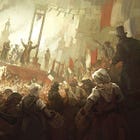
The British Origins of the Jacobins, Mafia Godfather Mazzini and the Rise of the Young Europe Cults
This argument for a “free market” has also allowed for the creation of parallel states, and increasingly what was the underground world of crime and vice has found it can justify its actions in broad daylight.
Jeffrey Steinberg writes in his paper “The Bestial British Intelligence of Shelburne and Bentham”:
“Lord Shelburne was so taken with Bentham [who had already gained a reputation in hedonism] that he installed the writer, who fancied himself alternately as the reincarnation of Sir Francis Bacon and as the ‘Sir Isaac Newton of the moral sciences,’ in an apartment at his Bowood estate. Shelburne assigned to Bentham an English and Swiss editor in order to ensure the widest dissemination of Bentham’s works in both the English – and French – speaking worlds. Later, Bentham’s works would be even more widely circulated throughout Latin America during his years of intimate collaboration with the American traitor Aaron Burr, and with revolutionists Gen. Francisco de Miranda – a Venezuelan by birth who played a leading role as a paid agent of the British East India Company in the Jacobin Terror in France – and Simón Bolívar. Burr, fleeing the United States [since he was found out in organising a secessionist plot], took up residence at the home of Bentham, and the two men conspired to establish an empire, first in Mexico, and later in Venezuela.” [Aaron Burr’s role in this secessionist plot will be discussed further shortly.]
On Jan. 27, 1783, Shelburne stood before the House of Lords to argue for ratification of the Treaty of Paris, formally bringing to an end the American Revolution and the conflict with France and Spain. In his speech Shelburne threatened the U.S. that there would be consequences if they continued their system of protective tariffs and demanded that they abide by “free trade.”
Shelburne stated: “You have given America, with whom every call under the heaven urges you to stand on the footing of brethren, a share in a trade, the monopoly of which you sordidly preserved to yourselves [in reference to the Americans]…Monopolies, some way or other, are very justly punished They forbid rivalry, and rivalry is of the very essence of well-being of trade…I avow that monopoly is always unwise; but if there is any nation under heaven which ought to be the first to reject monopoly, it is the English [author’s note: this is quite a laughable statement!]. Situated as we are between the old world and the new, and between southern and northern Europe, all we ought to covet on Earth is free trade…With more industry, with more capital, with more enterprise than any trading nation on Earth, it ought to be our constant cry: Let every market be open.”
Shelburne argued that the less than 10-year-old country, the newly founded United States, subject itself to full rivalry with the British Empire in economic trade, as if this were somehow for the well-being of anyone except for the British Empire, who itself used protective tariffs and had a system of looting abroad.
Jeffrey Steinberg writes:[14]
“Shelburne’s policy of unbridle free trade between Britain and the United States nearly destroyed the American republic in its cradle. Some of the American Founding Fathers clearly understood the danger in Shelburne’s free trade ruse. They launched a crucial debate over the need for a strong federal constitution. But for the Federalist debate and the resulting United States Constitution of 1787, Shelburne’s scheme for rapidly bankrupting and re-absorbing North America into the British imperial domain, would have probably succeeded.”
The Origins of America’s Scottish Rite & Knights of the Golden Circle
Thus, it should be no surprise that the Scottish Rite was formally organized in the U.S. in 1801, as a group of Tory partisans on the losing side of the American Revolution. As already mentioned, one of the principal men involved from the very beginning was a British general by the name of Augustine Prevost. Prevost had conquered Charleston, South Carolina, and set up a secret police apparatus there which became the Scottish Rite headquarters, after the British Army left.
Recall that the Prevost family in Geneva were hereditary members of the ruling Council of 200 (Genoa had a Doge system similar to that of the Republic of Venice), the “Committee of Europe’s Spymasters.” ‘Augustine Prevost and his brother, Colonel James Marcus Prevost, were responsible for the recruitment of the largest force of Crown Loyalists used in the British war effort’ and ‘these Prevosts of Geneva represented the very highest levels of British-Swiss alliance forming the British Secret Intelligence Service. When Colonel James Prevost died, Aaron Burr married his widow, adopted his children, and took his place in the family and the British Secret Service. The substantial Tory element in South Carolina would serve Burr and the Prevosts as a fertile recruiting ground for political-conspiratorial activities after the Revolution, under the overall coordination of the supervisor of Loyalist affairs, Secret Intelligence chief Lord Shelburne.’[15]
Anton Chaitkin writes in his Treason in America:
‘The History of the Supreme Council, 33o, Ancient Accepted Scottish Rite of Freemasonry, Northern Masonic Jurisdiction of the United States of America, and Its Antecedents’, by Samuel H. Baynard, Jr., states that Augustine Prevost was Grand Steward of the Lodge of Perfection set up in Albany, New York, in 1768.[16] This lodge was said to have been established by one of the traveling ‘patent’ bearers named Henry Francken. The lodge was ‘abruptly terminated’ as the troubles with the British came to a head in 1774, but not before responsibility for the ‘Ancient’ system was passed on:
In February 1774, Francken appointed Augustine Prevost deputy Inspector General at Kingston, Jamaica, and thereafter, so far as previous writers have recorded, Francken passed out of our picture. The official Rite historian states further that Prevost, in 1776, commissioned a fellow British army officer ‘to establish the Rite of Perfection in Scotland, [this commission] was afterwards to form the basis of its constitution’.”
Thus, the origins of the American Scottish Rite would come from a Swiss member of the Council of 200, who was directly working for the British Secret Intelligence Service.
Aaron Burr, (Vice-President 1801-1805 under Jefferson), was closely mentored by the Prevost-Mallet family and was also in the service of the British Secret Intelligence Service. Burr would play a central role in the treasonous faction which orchestrated the secessionist plot in 1807.
Augustine Prevost would have two sons, Sir George Prevost who would become Governor General of Canada and Commander of the British Forces in North America, who invaded the United States during the War of 1812; and Augustine Prevost Jr., a major in the British Army who was stationed in the United States and died in 1824. It was this Augustine Prevost who would found the Scottish Rite Lodge networks in the United States, with its official founding in 1801 and its headquarters based in Charleston, South Carolina, where his father had already established its base at the end of the American Revolution.
Chaitkin writes:[17]
“In [a] correspondence, [Augustine] Prevost [the son of Augustine Sr.] discusses his plans to establish a Swiss settlement – not far from where the Genevan immigrant Albert Gallatin [who initiated the ‘science’ of Anthropology in the United States] did indeed establish the base from which he launched the Whiskey Insurrection in the 1790s.
…Prevost’s other appointee, Pierre Duplessis, traveled to Massachusetts, and in 1790 he established the Knights Templars organization in Newburyport. The commander of that organization from 1823 to 1866 was Richard Spofford, father of Caleb Cushing’s private secretary.
It should be noted that while establishing these Lodge networks, Major Prevost was in constant contact with his lawyer, uncle, and advisor, Aaron Burr, who came to Philadelphia in 1791 as the US Senator from New York. Burr represented Prevost in his long feud with the pioneer father of novelist James Fenimore Cooper over the title to the Cooper lands in upstate New York – a conflict which ended when William Cooper was assassinated in 1809 by a blow on the head from behind.
With these antecedents, the Scottish Rite organization in Charleston, South Carolina – later to be called the Mother Lodge of the World – was officially founded in 1801.”
Caleb Cushing (1800-1879) was, as Anton Chaitkin’s Treason in America incontestably demonstrates, one of the master architects of the American Civil War and the city of Newburyport would hold the “womb of this treasonous clique”, including Cushing’s protégés, Albert Pike (the founder of the American Scottish Rite) and William Lloyd Garrison (famed Abolitionist); as well as Caleb Huse; and George Peabody.[18] George Peabody, American born, was the founder of a gigantic banking firm in England, to which he hired Junius and J.P. Morgan. When Peabody died the firm became the House of Morgan and later moved to the United States.
Chaitkin writes: “Historians have shown a strange lack of curiosity regarding the Cushing, Garrison relationship: William Lloyd Garrison became the leader of the most extreme and provocative elements of Abolitionism, while Caleb Cushing became the main-proslavery spokesman and strategist in the North.”[19]
This might seem a paradoxically contrary thing at first, however, it becomes more transparent when one looks at what was the goal, which was the break-up of the Union. In other words, they were stoking both sides of the same fire.
Albert Gallatin (1761-1849), who we will discuss in further detail later on as the man who initiated the ‘science’ of anthropology in America, like the Prevosts, also came from one of the leading oligarchical families of Geneva. ‘Relations of blood, and of bloody deeds, united them with Gallatins, Galitzins, Galitis, and Gallitinis in Russia, South Germany, Holland, Italy and Savoy, where the family originated. They had served the feudal nobility of Europe for centuries as financiers and soldiers of fortune. The Gallatins maintained a seat on Geneva’s Council of 200.’[20]
The first major secession attempt would occur in 1807 led by Burr, with the Workman Memorandum serving as its basis.[21]
Anton Chaitkin writes:[22]
“…in the year 1800, British intelligence officer James Workman submitted a remarkable document to the British Minister of War, Henry Dundas: the British plan for the conquest of the Western Hemisphere…In this treatise will be found the basis for Britain’s appeal to American traitors – white racial superiority and love of the British ‘mother’ culture. Workman’s memorandum and his subsequent arrival in New Orleans may be seen as the opening shot of the American Civil War of 1861-1865.
…The memorial…states that 2,500 regular troops, or 4-5,000 colonial irregulars and 1,000 volunteers, would be sufficient to conquer both Florida and Louisiana, the invasion to be backed by one of the British naval convoys in the Caribbean.
Extensive details of appropriate military action in the Americas are discussed [in the Workman Memorandum]:
‘The situation of the Indians…would afford an advantage too important to be overlooked or despised by an invader. He could attach them to his interests…by abrogating the vexatious and degrading imposts to which they are now subject, by treating their chiefs with respect and bestowing upon them in compliance with their customs, some privileges and distinctions.
The countries proposed to be conquered would not only afford an immediate increase to our maritime trade, but would become the means of supplying, sustaining, and forever preserving to Great Britain all the colonies now in her possession.
It may be said that these projected colonies might in time revolt…At all events, whatever may become of sovereignty and imperial dominion, it should be a proud satisfaction to every Briton to establish and immortalize his name, his language, and his race in every part of the world…
The same interests, language, laws, customs, and manners will ultimately unite together, as against foreigners, Great Britain and all the nations and colonies that have sprung or may proceed from her.
…If the Spanish settlements are taken…the whole continent of America will, in less than a century, become English….
These countries, together with [our] Indian empire, would place nearly one-third of the inhabitable territory, and one-half of the commercial riches of the earth at [our] disposal.’[23]
Earlier, the US ambassador to England, Rufus King, had sent a letter to John Adams’s Secretary of State, Timothy Pickering, dated February 26, 1798, bearing intelligence of a preliminary British plan to the same effect. King called it:
‘…a plan, long since digested and prepared, for the complete independence of South America…England…will propose to the United States to cooperate in its execution. [British-backed adventurer Francisco de] Miranda will be detained [in London] under one pretence or another, until events shall decide the conduct of England…I will bring together and…send to you, such information as I have been able to procure upon this…subject, having found out and acquired the confidence of certain Jesuits, natives of South America, who, with a view to its independence, are, and for several years have been, in the service and pay of England. I have often conversed with them, and seen the reports which they have prepared for their employers…’[24]”
It is worth holding in mind that this 1807 secessionist plot, first outlined by Workman in 1800 and attempted by Burr seven years later was not the first but rather the third such attempt. The first having been prepared by Burr in 1800 but which required Burr’s victory over Jefferson to the presidency, at which point the ‘northern secessionists’- largely centered in the Federalist Party would declare the constitution null and void while separating from the slave southern states. Burr would then ensure that the “free” northern states would join British territories in Canada forming a new pro-British confederacy. When Alexander Hamilton defeated this effort by getting Jefferson elected in 1801, Burr tried to revive the plot once more in 1804 by seeking the governorship of New York- the economic engine of the young nation. Once again, his plan was defeated by a relentless Hamilton who ensured Burr’s loss and the survival of the republic once more.
Burr would succeed in removing Hamilton quite literally from the picture by shooting him dead in a duel in 1804. Hamilton’s eldest son Philip was fatally shot three years before in a duel with George Eacker, who was politically aligned with Burr and a member of the Tammany Society, Aaron Burr’s political machine.
You may be wondering what this secessionist plot of 1807 has to do with the Scottish Rite, well apparently it has everything to do with it and is inextricably tied to British imperial interests…which makes sense considering the very founding of the American Scottish Rite was made by a member of the British Secret Intelligence Service.
Another family who played a prominent role in the attempt to break up the Union of the United States was the Livingstons, based in New York. The political ‘prestige’ of the family dates as far back as Mary Stuart, Queen of Scots, whom the fifth Lord Livingston was one of two guardians of, and the grandson of the seventh Lord of Livingston was one of two Scotsmen to negotiate with Charles II for his accession to the Scottish throne as well as the English. Later the Livingstons revolted as ‘Jacobites’ against the rule of William III and the later House of Hanover, in favor of the continuing claim of the Stuarts.[25]
Mary Queen of Scots was born at Linlithgow Palace, Scotland, to King James V and his French second wife, Mary of Guise. King James V’s House of Stuart had gained the throne of Scotland in the 14 century through the marriage of Marjorie Bruce, daughter of Robert the Bruce, to Walter Stewart, 6th High Steward of Scotland.
Chaitkin writes:[26]
“The first Livingston in America…Robert Livingston [1746-1813]…In 1783, the leader of the Masonic organization of the British army in New York[27] was Grand Master William Walter, who was soon to make a forced departure to the Tory exile station of Nova Scotia. Walter arranged that the leadership of this Masonic organization – now no longer to be officially associated with the British army – would be put in the hands of Robert Livingston. The latter was installed Grand Master of the Grand Lodge of New York by William Cock, Walter’s temporary replacement, on February 4, 1784, just before Grand Master Cock also left with the departing British troops.
From 1798 to 1800, Burr’s law client John Jacob Astor was treasurer of the New York Grand Lodge. From 1801 to 1803, Robert Livingston’s younger brother Edward, who was also mayor of New York, and, by virtue of Burr’s designation, district attorney, served as Deputy Grand Master.”
The French minister in Washington, Louis Marie Turreau, who wrote home to Foreign Minister Talleyrand further confirms Burr and Livingston’s role in attempting to commit Workman’s Memorandum into action:
“Louisiana thus is going to be the seat of Mr. Burr’s new intrigues; he is going there under the aegis of General Wilkinson. It is even asserted that he might find the means there already prepared by a certain Livingston…from New York City and who is closely associated with Burr.”[28]
Burr had also obtained aid from Catholic corridors for his secessionist plot, most notably that of the Jesuits, in the words of Burr’s executor, Matthew Davis:
“The Catholic bishop, resident of New Orleans, was also consulted, and prepared to promote the enterprise [by Burr]. He designated three priests of the order of Jesuits, as suitable agents, and they were accordingly employed…Madame Xavier Tarjcon, superior of the convent of Ursuline nuns at New Orleans, was in the secret. Some of the sisterhood were employed in Mexico.”[29]
Thus, we have the Scottish Rite, the British Secret Intelligence Service and the Jesuits all working for the same goal – the break-up of the Union…coincidence?
However, Burr’s and co. secessionist plot would ultimately fail, resulting in Burr fleeing to England wanted for treason, and thus only further confirming that he had been working for British interests all along...
Chaitkin writes:[30]
“The collapse of the conspiracy seems to have been caused by the habit…of ordinary American citizens to speak out when they suspect that something is being done against the interests of their country. Among these was Joseph Hamilton Daveiss, district attorney for Kentucky, who wrote to President Jefferson on January 10, 1806, outlining the secession plot and asking for the dispatch of investigators.
Eventually General Wilkinson decided to turn against Burr, apparently to save himself. He declared martial law in New Orleans and arrested Burr and several co-conspirators. Judge James Workman – described only as ‘an Englishman of three years residence’ in the Abernethy account – released Burr and his associates and began attacking Wilkinson as a liar.
But Burr was re-arrested, along with Workman and several other eligible characters. One of those taken and sent in chains to Washington was Dr. Justus Erich Bollman, Burr’s go-between for European arms and financing, who had previously been employed by Jacques Necker’s daughter Madame de Stael in smuggling operations within Revolutionary France.
Edward Livingston, who had been installed as Grand Master of the Louisiana Masonic Lodge as soon as he arrived there, was in sufficient command of the affairs of the legal community to have all charges against himself dropped. All the main conspirators managed to get off as well.”
Burr’s treason trial was held in Richmond, Virginia and was presided over by Supreme Court Justice John Marshall. Burr was acquitted. Crucial evidence to Burr’s guiltiness in the secession plot was not included in the trial, including the letter of British Ambassador Anthony Merry which documented the plans for secession and the involvement of Burr amongst others.[31]
Ambassador Merry wrote giddily to the British Foreign Secretary explaining his having recruited Burr to the Empire’s cause of creating a new western Confederacy established by a joint U.S.-British war on Mexico with Burr as it’s head. Ambassador Merry wrote:
“I have just received an offer from Mr. Burr, the actual vice president of the United States (which situation he is about to resign) to lend his assistance to His Majesty’s Government in any manner in which they may think fit to employ him, particularly in endeavouring to effect a separation of the western part of the United States from that which lies between the Atlantic and the mountains, in its whole extant. – His propositions on this and other subjects will be fully detailed to your Lordship by Col. Williamson who has been the bearer of them to me, and who will embark for England in a few days. – It is therefore only necessary for me to add that if, after what is generally known of the profligacy of Mr. Burr’s character, His Majesty’s Ministers should think proper to listen to his offer, his present situation in this country where he is now cast off as much by the democratic as by the federal party, and where he still preserves connections with some people of influence, added to his great ambition and spirit of revenge against the present administration, may possibly induce him to exert the talents and activity which he possesses with fidelity to his employers.”
Chaitkin continues:[32]
“Witness Andrew Jackson – who was not himself charged because he had earlier ‘warned’ of Burr’s designs – denounced the President [Jefferson] for ‘oppressing’ Burr. And Albert Gallatin’s old friend, Paul Henry Mallet-Prevost, Burr’s cousin, swore that he wasn’t involved in the plot, and had refused to take part.
When he left the scene of the trial, Burr was a hated and a hunted man. He was wanted by mobs, to be lynched. He was wanted by several states, on charges including treason.
Burr made his way to New York in disguise. After receiving tens of thousands of dollars in cash advances for his house from John Jacob Astor, he fled the country, June 7, 1808, on a ship bound for Nova Scotia.
The British governor of Nova Scotia was Sir George Prevost, Burr’s nephew by marriage, who was soon to be Governor General of Canada. Prevost welcomed Burr effusively, and gave him a royal send-off to England with a letter of introduction to the British Secretary of War Lord Castlereagh.
When Aaron Burr arrived in England, he swore to customs officials that he was ‘born within the King’s allegiance and his parents British subjects.’ His purpose in coming to England? ‘I am known personally to Lord Mulgrave and [Prime Minister] Canning, to whom the motives for my visit have been declared. These reasons have long been known to Lord Melville’ – special operations chief Henry Dundas [the original recipient of Workman’s Memorandum].”
In the Footstep of the Grand Symbolic Lodge of England & the Purge of American Freemasonry
“Grand Lodges in the United States, if wise, ought to follow in the footsteps of the Grand Symbolic Lodge of England and beware that with all their foreign intercourse and corresponding that they do not become sooner or later Frenchified.”
- Quote from John James Joseph Gourgas DuPan Rengers[33], from J. Hugo Tatsch’s book Gourgas, Conservator of Scottish Rite Freemasonry (1938).
As previously mentioned, one of the principal men involved in the founding of the Scottish Rite was a British general by the name of Augustine Prevost. Prevost had conquered Charleston, South Carolina, and had set up a secret police apparatus there which became the Scottish Rite headquarters, after the defeat of the British Army in the American Revolution.
Another notable name involved in the founding of the Scottish Rite was John James Joseph Gourgas DuPan de Rengers, referred to as J.J.J. Gourgas or simply Gourgas from here on.
Chaitkin writes:[34]
“John James Joseph Gourgas DuPan de Rengers (1777-1865) arrived on the scene after the Charleston founding. He was to consolidate the Scottish Rite organization in the North, and ran most of the Rite’s affairs in the United States from 1813 until his death at the end of the Civil War. Gourgas’s mother, Ulbiana Nicasia DuPan, was the daughter of a captain of the Geneva Garrison who held a hereditary seat on the Geneva Council of 200, along with his cousins the Gallatins, the Mallets, the Prevosts, and the DeSaussures.
The Gourgas family…had been French Protestants…coming to Geneva in the late 1600s, they emigrated to England during the French Revolution…sailed from England to Boston in 1803, finally settling in Weston, Massachusetts. J.J.J. Gourgas went to New York around 1806, quickly taking control of the Scottish Rite organization there (the headquarters was later moved to Boston). In 1813, Gourgas worked out a national territorial arrangement with the Southern Supreme Council, and began to put his Swiss imprint on American freemasonry…”
The purge of the better traditions of American freemasonry was accomplished by the late 1820s in reaction to the kidnapping, terrorizing and murder of William Morgan of Batavia, in New York, September 1826. It was said that he was about to publish certain secrets of freemasonry, and that Masons conspired together to silence him. A national furor arose, and the short-lived Anti-Masonic Party was organized.
Focused on this single issue, the Anti-Masonic Party’s efforts brought about the discrediting of freemasonry in general. In reaction to the national furor, within Massachusetts, Caleb Cushing advised all the Masonic Lodges to dissolve themselves for the time being. Cushing’s own lodge was dissolved as were more than 3,000 other lodges throughout the country.[35] By the time freemasonry was “revitalized” in the United States several years later, all freemason lodges were under the control of the Scottish Rite.
‘From that time on, there was only sporadic interference by American-tradition Masons[36] in the hegemony of the Swiss over the Masonic movement. The Americans had been, in effect, cleaned out.’[37]
To quote the Scottish Rite’s own biography of J.J.J. Gourgas:
“It was not until after the revitalization of Freemasonry, following the anti-Masonic excitement of 1826-1840, that many of the methods prevailing today were inaugurated…. The Scottish Rite has definitely relinquished its control of the Symbolic degrees wherever a regular and legitimate Grand Lodge [of England] controls them.”[38]
In other words, the Scottish Rite was now no longer pretending to be attached to the structure of American Masonry but exercised a veto power over it (similar you could say to the Jesuit influence over the Catholic Church within the Americas). Thus, the Scottish Rite would relinquish control wherever a regular, legitimate Grand Lodge was in control, i.e. The Grand Symbolic Lodge of England.
Thus, it was no small account that Gourgas, who consolidated the Scottish Rite organization in the North, and ran most of the Rite’s affairs in the United States from 1813 until his death in 1865, at the end of the Civil War, would write “Grand Lodges in the United States, if wise, ought to follow in the footsteps of the Grand Symbolic Lodge of England…”[39]
The Scottish Rite and the Young America Movement
The views of the Scottish Rite were inextricably the same as that of the Grand Symbolic Lodge of England, and continued the myth-based racialism as seen in the writings of such authors as Edwin DeLeon (father of the Young America movement) and philosopher David Hume (of the school of John Locke).
David Hume, in his History of England, would also favourably describe the political system of the Norman conquerors of England in 1066 and how these pirate chiefs created the Aristocracy of Britain to rule over the enslaved Englishmen. Thus, “the ‘freedom’ of which DeLeon and Hume speak is the freedom of the master from any restraints of morality or civilization…It is from these untamed, pagan conquerors that the ‘Cavaliers’ of the American South, and the Northern ‘bluebloods’ such as Lowell, counted themselves as descended, and on this basis were encouraged to feel racially superior to the American and English white people. This is the wormy kernel inside the racist nut.”[40]
The feudalists in the Scottish Rite of Freemasonry would exploit this myth-based racialism in creating an insurrectionary machine in the 1850s; they continued to draw from this myth in their 1938 biography of J.J.J. Gourgas, by J. Hugo Tatsch:
“The conquest of England by the Normans during the eleventh century introduced artistic, scientific and religious activities to a region which up to that time had been one of the frontiers of Europe. The military overlords – the feudal barons who laid the foundations of a new form of government which finally blossomed into the democracy we know today…”[41]
In his memoirs, written in 1890 in England, Edwin DeLeon writes: “The relations between white and black races – master and slave – in the Southern states…were partly patriarchal and partly feudal, and the plantation negro was the revival…in some respects of the English Serf…[conquered and enslaved by] the victorious Norman.”[42]
DeLeon writes that England having been enslaved under feudalism, had become a perfectly democratic society. However, this was not possible with the case of the black slave, as DeLeon writes not being “of the same blood and race as his master,” can never really advance his condition despite his master’s graciousness, and this problem “may result in the peaceable or forcible expulsion of the surplus portion of the coloured race” from the United States.[43]
Edwin DeLeon was from a Jewish family in South Carolina that was ‘already notorious for its involvement in the slave trade and in Scottish Rite Freemasonry. DeLeon was later a leader of the Confederate Secret Service.’[44]
DeLeon ‘praised his teacher at the school, Thomas Cooper, an English atheist and Lord Shelburne’s adventurer, who had first proposed that the South secede from the Union. DeLeon hailed Cooper as a tender-hearted religious heretic and “an earnest…disciple of the school of Bentham and Malthus”.’[45]
De Leon, the father of the Young America movement [a proto-fascist movement], wrote “There is a ‘Young Germany, ‘a Young France,’ and a ‘Young England’ – and why not a ‘Young America’?”[46]
Anton Chaitkin writes in his essay “America’s ‘Young America’ movement: slaveholders and the B’nai B’rith”:
“The ‘Young America’ idea first bore its bitter fruit when US President James Polk ordered American troops to invade Mexico. Young Congressman Abraham Lincoln exposed the President as a fraud; he denounced the Mexican war as a slaveholders’ conspiracy that would wreck our country. Lincoln was driven out of politics until 12 years later.
This British project matured in the mid-1850s, and its active focus shifted to the West. There were two important partners out there: Isaac M. Wise, a B’nai ‘B’rith Midwest leader based in Cincinnati; and Killian H. Van Rensselaer, a British military operative and Scottish Rite Mason northern leader, also based in Cincinnati. Between 1854 and 1860, they spread a pro-slavery, secessionist-terrorist group along the route extending down the Mississippi valley to Louisiana and Texas: the Knights of the Golden Circle. Wise’s B’nai B’rith organization spread southward along the identical route. Their plan was to spread slavery into Latin America and the US West, and break up the USA into several small countries.
In Louisiana, US Sen. Judah Benjamin and Scottish Rite Southern Mason leader Albert Pike worked together on this terrorist secession project. There is a bust of Albert Pike in New Orleans, celebrating his work in that pre-war southern base for the Scottish Rite, the Knights [of the Golden Circle], and B’nai B’rith. Judah Benjamin’s relative (his uncle’s brother Manny) had earlier written the masonic order creating the Northern Scottish Rite organization, in which Wise and Van Rensselaer were now leaders.”
The Secessionist Plot 2.0 (the American Civil War), the Scottish Rite & the Knights of the Golden Circle
On January 3, 1830, as the Nullification-Secession Crisis was being heated up in South Carolina, the Scottish Rite Supreme Council in Charleston issued a warrant to “John A. Quitman [1798-1858], 1st Sovereign and Grand Illustrious Prince” to open and preside over a Scottish Rite organization in the state of Mississippi.[47]
According to the Dictionary of American Biography: “In 1834 he [Quitman] became identified with the political group known as ‘Nullifiers’ who held the views expressed by the Nullification leaders in South Carolina [the headquarters of the Scottish Rite]. He prepared an address in their behalf, which was adopted May 21, 1834, by a convention of ‘Nullifiers’ at Jackson…the sentiments therein set forth were not then popular in Mississippi.”
Chaitkin writes:[48]
“The Knights of the Golden Circle, organized in 1853 under the supervision of the Scottish Rite of Freemasonry, pushed south from Cincinnati, Ohio, into the states on the Gulf of Mexico, recruiting armed men for the conquest of Latin America and the secession of the American South -a replay of Aaron Burr’s 1807 program.
The military chief of this ‘Cuban Junta’ was John Anthony Quitman, a New Yorker who had moved to Mississippi and was now (1853) the tactical leader of the Southern secessionist movement. Quitman had been arrested by President Zachary Taylor and indicted for masterminding an identical plan against Cuba in 1850. With Taylor having immediately, conveniently died, the indictment was dropped and Quitman’s operation was back in business in New York City.”
Chaitkin continues:[49]
“…Quitman imported into Mississippi the project of the European oligarchs to destroy the American republic, which had been recently tried out in South Carolina…John A. Quitman was an avid participant – a brigadier-general of volunteers – in the Mexican War, becoming close friend of Caleb Cushing of Massachusetts. At the close of the war, he presented a plan to President Polk for the permanent subjugation and annexation of Mexico.
The Freemasons’ monthly magazine of Boston printed the following notice on February 1, 1848:
‘At a special session of the Supreme Council…for the Southern Jurisdiction…our illustrious Brother, John A. Quitman…Major General in the Army of the United States, was elected to fill a vacancy in the [Southern] Supreme Council, and was duly and formally inaugurated a Sovereign Grand Inspector General of the 33d. All Consistories, Councils, Chapters and Lodges under [the Southern] jurisdictions are hereby ordered to obey and respect him accordingly.’ Quitman was by this time the recognized leader of the secessionist movement in Mississippi, the most important such grouping outside of South Carolina.
…In October 1849, Quitman’s Mississippi secessionists convened a strategy session in Natchez with representatives from throughout the South, and a call was issued to all Southern states to send delegates to a convention on June 3 of the following year.[50]
In January 1850, Quitman took office as Governor of Mississippi. In that office, as leader of the extremists in the South, Quitman was openly proposing the breakup of the Union, and the new president, Zachary Taylor, was presented with a deepening national crisis.
At the same time, Quitman was engaged in another of Young America’s adventures: he was arranging and financing the invasion of Cuba by mercenary troops. With the ostensible purpose of taking Cuba out from under ‘oppressive’ Spanish rule, and saving the South from the threat that Spain might abolish slavery in that neighbouring island, a ‘Cuban Junta’ of revolutionaries in New York had hired Spanish renegade Narciso Lopez as a general for the invasion, and Quitman for broker and sponsor. It is useful to note that Virginia’s Robert E. Lee and Mississippi’s Jefferson Davis were both offered the leadership of the invasion, and both refused the offer.
…President Zachary Taylor [1784-1850]…sent his own agents into California and New Mexico and arranged for those territories to request that Congress admit them to the Union as free states. While Texas leaders were claiming part of New Mexico, and there were threats of invasion across the desert from Texas into New Mexico, Taylor pledged that he would uphold the law and the Constitution at all costs.
Taylor now acted against the primary anti-Union conspirator. In June, 1850, a federal grand jury in New Orleans indicted Mississippi Governor John A. Quitman for financing the invasion of Cuba, in violation of laws protecting the neutrality and peace of the United States. [emphasis in original]
On July 3, John Quitman sent a telegram to Washington, D.C., saying that he would personally be leading an anti-federal; army of several thousand troops from Texas into New Mexico. Allan Nevins, in Ordeal of the Union, paraphrases President Taylor describing a meeting he had that day…
‘I told them…that if it becomes necessary I will take command of the army myself to enforce the laws. And I said that if you men are taken in rebellion against the Union, I will hang you…’[51]
The next day, July 4, 1850, Taylor had on his desk a half-finished message declaring that he would never permit Texas to seize any part of New Mexico’s area. The President appeared that afternoon at an Independence Day celebration, at which the audience was exhorted to rally to the Union.
That evening the President ‘fell ill,’ vomiting up a mass of blackish material. He died on July 9th. Death was officially attributed to his having consumed too-cold milk and too many cherries. This, according to the official reports, had caused ‘cholera morbus,’ then fever.”
This was the second American President (the first being William Henry Harrison who would die after only one month into his presidential term) to die from “stomach distress.”
The Knights of the Golden Circle, was a secret society founded in 1854 by George W.L. Bickley, with the objective to create a new country known as the Golden Circle where slavery would be legal. As Chaitkin earlier stated, the Knights of the Golden Circle were under the supervision of the Scottish Rite and their military chief was John Anthony Quitman. The Golden Circle was to include the territories of the Southern United States, Mexico, Cuba, Haiti, the Dominican Republic and most of the islands of the Caribbean, Central America, and the northern parts of South America.
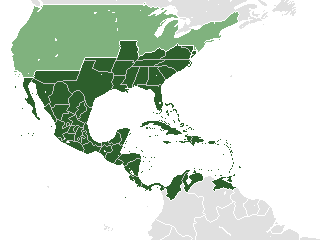
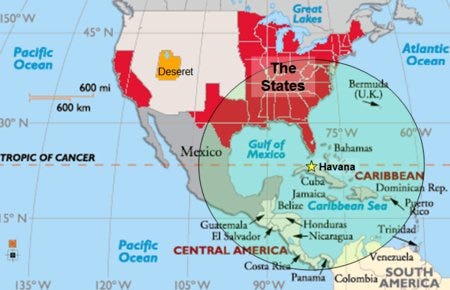
The Knights of the Golden Circle was a paramilitary organization, similar though much more extensive to Joseph Smith’s (the founder of Mormonism and Mormon Masonic Lodges) paramilitary operations which occurred in the state of Missouri, the most notable known as the Missouri Mormon War of 1838 ) [see my paper The Shaping of a World Religion: From Jesuits, Freemasons & Anthropologists to MK Ultra & the Counter-Culture Movement PART II].
The name of the Knights of the Golden Circle was derived from the circle with a 1200-mile radius from Cuba, cutting through North and South America. This vision of the Knights of the Golden Circle would continue to play a prominent role up to the day of the Kennedy administration and is implicated in the Kennedy assassination (more on this later in this series). Havana, Cuba is at the centre of the Knights of the Golden Circle’s proposal for a new country.
Before the civil war began, ‘Isaac Wise had two B’nai B’rith local leaders in Cleveland: Simon Wolf and Benjamin F. Peixotto. Wolf and Peixotto also worked as political agents for Democratic Part boss August Belmont, the US representative of the Rothschild banks – chief moneybags of the British crown, and the British puppets. Banker Belmont paid for the Knights of the Golden Circle and Young America projects, which he helped plan while he was US Ambassador to the Netherlands.’[52]
Chaitkin writes:[53]
“By the time the Civil War started, the Knights of the Golden Circle claimed at least 65,000 armed and drilled recruits in the deep South – and in the area of the nation’s capital (this made the successful inauguration of President Abraham Lincoln a tricky business). The order gradually stepped up its molding of Southern ‘public opinion’ toward the necessity of secession from the Union. At the point secession was being resolved upon, it was of great value to the leaders of the insurrection to have an armed secret organization numbering in the thousands, to enforce ‘unanimous’ public support for their actions.
… While the Knights of the Golden Circle, the military preorganization of the Confederacy, was being organized under the control of the Scottish Rite’s Northern chief, the Swiss J.J.J. Gourgas, and his lieutenant Killan Henry Van Rensselaer, the Southern Jurisdiction of the Rite was organizing the political leadership for the secession itself. The man in charge of this project was Albert Pike of Newburyport, Massachusetts.
Pike had been a life-long friend and a decades-long protege of his townsman Caleb Cushing. On March 20, 1853, two weeks after Cushing rose to power as the attorney general of the United States, the Rite’s Southern Secretary General Albert Gallatin Mackey conferred the Rite’s exalted degrees upon Albert Pike at a ceremony in Charleston, South Carolina.[54]
… In 1859, Albert Pike was called upon to become the grand commander of the Southern Scottish Rite…The gap Pike was to fill came from the sudden death, in 1858, of Mississippi secessionist and Scottish Rite leader John A. Quitman. Over the next two years - until the records suddenly stop a week before Fort Sumter – Pike set up a Scottish Rite Supreme Council extending for the first time over the entire South.”
The Scottish Rite would come to rule over American Freemasonry during the nineteenth century and Albert Pike is recognised as the source of this success.
Thus, the Scottish Rite would not only play a central role in the attempt to break-up the American Union, in direct service to British Secret Intelligence, but it would also play a central role in the vehemently backed racist policy concerning black slaves, a system that they wished to see solidified in the southern United States all the way down to the northern tip of South America.
But it does not end there, it turns out the Scottish Rite and its affiliates would also play a central role in the genocide of the indigenous people within the United States.
Jackson’s Trail of Tears
The Trail of Tears was a policy of ethnic cleansing and forced displacement of approximately 60,000 people of the "Five Civilized Tribes" between 1830 and 1850 by the United States government. As part of the Indian removal, members of the Cherokee, Muscogee (Creek), Seminole, Chickasaw, and Choctaw nations were forcibly removed from their ancestral homelands in the Southeastern United States to newly designated Indian Territory west of the Mississippi River after the passage of the Indian Removal Act in 1830. The Cherokee removal in 1838 (the last forced removal east of the Mississippi) was brought on by the discovery of gold near Dahlonega, Georgia, in 1828, resulting in the Georgia Gold Rush.[55]
Of the 60,000 who were forcefully displaced from their ancestral homelands in southeastern United States, several thousands died from exposure, disease, and starvation while en route to their newly designated Indian reserves west of the Mississippi River. It was effectively a genocide.
The Trail of Tears was initiated and carried out for its first seven years under the administration of Andrew Jackson (1829-1837) who was also responsible for the Indian Removal Act. The reader should be aware that Andrew Jackson was a close friend of Aaron Burr, a friendship that began during their Senate days, and had provided Burr with hospitality, praise, recruits (including his own nephew), and the boats with which to transport the mercenary army Burr was assembling down the Ohio River.[56] This was in relation to the 1807 secessionist plot led by Burr, discussed earlier. Recall Jackson went so far as to denounce President Jefferson for “oppressing” Burr in his trial for treason.
Chaitkin writes in “Treason in America”:[57]
“Burr proposed, after the war, that his co-conspirator Andrew Jackson should be made President, so as to end the domination of Virginia over that office (and the domination of sane nationalists over the South). Jackson became Burr’s one-man project. When the idea took hold, Edward Livingston was on hand to guide Jackson’s course to the White House.
…In 1830, shortly before he was named US Secretary of State by President Jackson, Edward Livingston was installed as Grand High Priest of Masonry, in the tradition that had been left in the United States by the evacuating British forces at the end of the Revolution.
…In 1831, John Jacob Astor created that National Bank of New York, and made Albert Gallatin its president. From that post, Gallatin was the leader of the free trade movement in this country, while his and Aaron Burr’s cousins, the Mallets, led that movement in England. With the help of renewed threats from the South Carolinians to secede from the Union, Gallatin’s movement forced the repeal of the protective system and the final destruction of the Second, restored Bank of the United States. Thus were ruined all the Colbertist measures for industrial development which had been established by Hamilton, torn down by Gallatin’s Treasury Department…
After President Jackson, anther protégé of Aaron Burr, Martin Van Buren – trained in the political and conspiratorial arts by Burr during his Tammany Hall days and rumored to be his illegitimate son – became President of the United States. He immediately plunged the country in the blackest depression of its short history, and was quite unpopular.
The political ‘theories’ of Albert Gallatin live on today in the work of Milton Friedman, Paul Volcker, and other monetarist leaders.
The organization that Aaron Burr created to control America and sabotage its independence is still in place.”
Thus, the Trail of Tears would be initiated by Burr protégé President Andrew Jackson (1829-1837) to be followed by another Burr protégé Martin Van Buren as President from 1837-1841.
Albert Gallatin who was a cousin and partner of Aaron Burr would hold the position of US Secretary of Treasury from 1801-1814 and became the first president of the New York branch of the National Bank from 1831-1839, created by John Jacob Astor another close collaborator of Burr. But Gallatin would not stop at the destruction of America’s banking system and in his later years he would initiate and shape the “science” of anthropology in the United States.
Chaitkin writes:[58]
“The first systematic study of the American Indians from the standpoint of the old European oligarchy was carried out by one of these oligarchs in person – Albert Gallatin…[who] had instigated the Whiskey Rebellion against the new US government; had led the Congressional opposition to Hamilton’s economic development plans; had selected his cousin Aaron Burr as Thomas Jefferson’s vice-presidential running mate; had virtually dissolved America’s armed forces when he was Treasury Secretary; had led the Free Trade party which destroyed the Bank of the United States under Andrew Jackson; and had been the longtime financial manager of slumlord John Jacob Astor and his family [John Jacob Astor deliberately created the slum system in New York[59].]”
Albert Pike and the Ku Klux Klan
After the civil war, the Ku Klux Klan was started up in Tennessee to stop newly freed blacks from voting. It should also be noted that the KKK costume bares an uncanny resemblance to that of the Knights of the Holy Sepulchre.
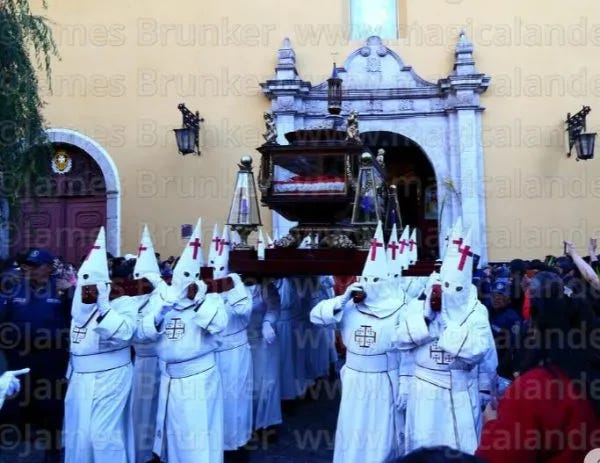
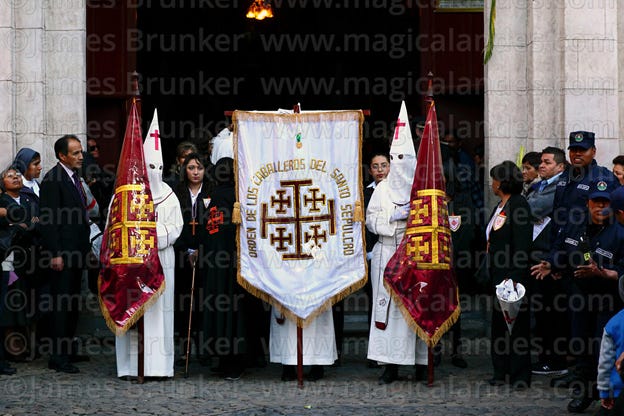
The Order of the Knights of the Holy Sepulchre was formed in 1099 with the primary mission to “support the Christian presence in the Holy Land” and was acting alongside the Knights Templars and the Knights Hospitaller.
Anton Chaitkin writes in “America’s ‘Young America’ movement: slaveholders and the B’nai B’rith”:
“With their occult-satanic rituals and costumes, the KKK burned and tortured blacks and pro-USA whites. The Klan’s national headquarters was in Memphis, where KKK leaders Albert Pike and Nathan B. Forrest lived and attended lodge together.
…The US Navy won an 1862 Mississippi River battle, and the US Army took Memphis, Tennessee. Isaac Wise’s Memphis B’nai B’rith agent, the British born Abrham E. Frankland, was arrested, and admitted being a Confederate spymaster. Julius Ochs sent him supplies in jail the same day, and Frankland was released on a $20,000 bond.
…Memphis B’nai B’rith leader Abraham Frankland was an intimate friend of Albert Pike. Frankland had been in the Pike-Benjamin spy apparatus, and wrote a blistering attack on the US attempt to reconstruct the South under equal rights. Frankland now stayed on to aid Pike in his postwar task.
A notebook of Frankland’s ‘Kabbalistic Researches’ is kept in the American Jewish Archives, Cincinnati. It is a compendium of espionage ciphers, black magic symbols, masonic ritual, and pagan religion. In his preface, Frankland acknowledges aid to this religious research by Albert Gallatin Mackey, grand secretary of the Scottish Rite, ‘and the Book Lohar on the Sephiroth, kindly loaned to me by Gen’l Albert Pike.’
…on page 38 of ‘Kabbalistic Researches,’ Frankland lists assorted gods passed down by tradition from ancient times, including ‘Four of the thirteen great Gods of Assyria,’ plus the god ‘Bel.’ Mackey writes that Frankland’s god Bel is a form of Baal, and was worshipped by the Babylonians as their chief deity.”
Recall in Part I of this series that according to Heckethorn in his book “Secret Societies of All Ages” that the accusation of the Templars worshipping of the idol Baphomet can be explained by Baphomet symbolising, who was sometimes represented with two heads, the two chiefs against whom the Templars directed their hostility: the Pope and Mahomet, the latter referring to Muhammad, the founder of Islam. According to Heckethorn the Templar idol Baphomet consisted of the intertwisted names of both by cutting off the first two letters of Mahomet and substituting it for Bap or Pap, the first syllable of Papa.
Heckethorn writes: “Thus by this figure the Templars expressed their independence of the Church and the Church creed ; and an initiated member was called a " friend of God, who could speak with God, if he chose ; " that is, without the intermediation of the Pope and the Church. Hence it becomes sufficiently plain why the secret [among the Templars] was looked upon as inviolable, and was so well kept that we can only conjecture its import.”
Baphomet would later be made famous amongst the Crowley circles and company, by the depiction created by Éliphas Lévi in his Dogme et Rituel de la Haute Magie (Dogma and Ritual of High Magic).
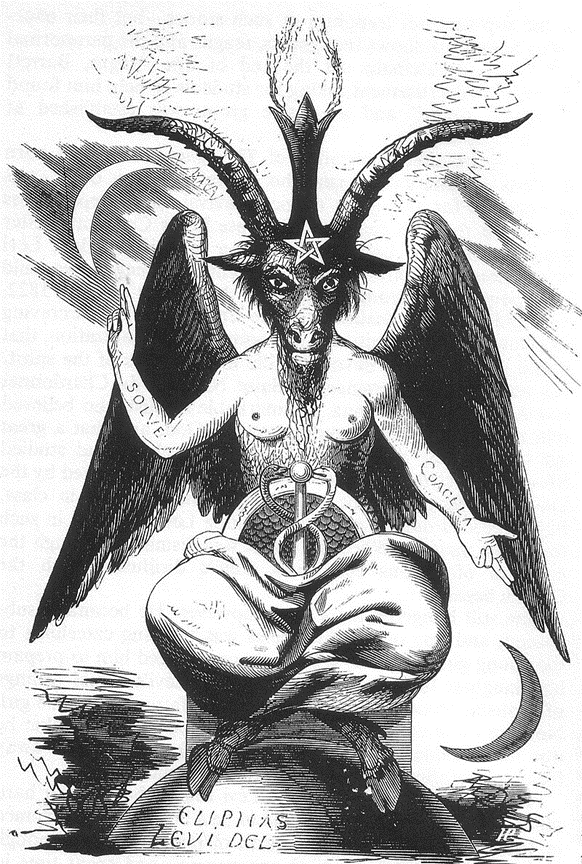
In the 19th century, Éliphas Lévi led the French occult revival, which involved a rediscovery and popularization of alchemy, magic and the Kabbalah. Éliphas Lévi (pseudonym of Alphonse Louis Constant) was a defrocked priest but a lifelong Catholic.
The Sigil of Baphomet would also become the official insignia of the Church of Satan.
It is fitting here to share a quote from Albert Pike while he was in France in 1889, expressing his views of God and what is to be considered “the Good”:
“The Masonic religion should be, by all of us initiates of the high degrees, maintained in the purity of the Luciferian Doctrine. If Lucifer were not God, would Adonay (the God of the Christians) whose deeds prove his cruelty, perfidy and hatred of man, barbarism and repulsion to science, would Adonay and his priests calumniate him?
`Yes, Lucifer is God, and unfortunately Adonay is also God. For the eternal law is that there is no light without shade, no beauty without ugliness, no white without black, for the absolute can only exist as two Gods…the true and pure philosophical religion is the belief in Lucifer, the equal of Adonay; but Lucifer, God of Light and God of Good, is struggling for humanity against Adonay, the God of Darkness and Evil.”
This quote, as per historian Anton Chaitkin, is available in French and English in the Albert Pike vertical file at the library of the Scottish Rite Southern Jurisdiction at 1733 16th St. NW, Washington D.C.
Anton Chaitkin continues in his essay “America’s ‘Young America’ movement: slaveholders and the B’nai B’rith”:
“This is, of course [in reference to Baal], the false god which the Old Testament Jewish prophets fought to expunge from Israel. Mackey says that since 1871 the Royal Arch Masonic system has combined Bel with ‘Jah’ for Jehova and ‘On’ for the Egyptian sun god, into ‘JahBelOn,’ as an ‘explanation’ of God. The Hebrew menorah blasphemously used in the Royal Arch Masonic ritual is displayed in the Alexandria, Virginia masonic temple.
Other pages of Frankland’s notebook contain ‘Cypher’ and ‘Private Cypher,’ ‘Philosophical and Hermetic Alphabet,’ ‘Cypher of the Rose Cross,’ and ‘Ten Cabalistic Spheres.’
In his ‘Morals and Dogma,’ KKK boss Albert Pike celebrates the collaboration between these two Memphis masonic chiefs, Pike and Frankland, at the height of the bloodiest assassination wave in US history. Pike says, ‘One is filled with admiration, on penetrating into the Sanctuary of the Kabalah, at seeing a doctrine so logical, so simple, and at the same time so absolute…a philosophy summed up by counting on one’s fingers…Ten ciphers and twenty-two letters, a triangle, a square, and a circle – these are all the elements of the Kabalah.’
So, upon the triumph of their KKK, Albert Pike appointed Abraham Frankland the head of the Scottish Rite of Freemasonry for the state of Tennessee, and an emeritus member of the Supreme Council. Simultaneously, Isaac Wise appointed Abraham Frankland the president of the B’nai B’rith district for Tennessee, Mississippi, Alabama, and Arkansas.
At the beginning of this century, Isaac Wise’s grandson Adolph Ochs, the owner of the New York Times, wrote a series of editorials attacking black voting rights in those southern states. This vicious editorial campaign helped swing the North behind the new anti-black Jim Crow laws which were then being written, which finally reversed rights gained by Union blood during the civil war. The Ochs-Sulzberger family, a great power in the B’nai B’rith, has remained in control of the New York Times ever since.”
The order of Memphis and of Misraim, which was later notoriously followed by members such as Aleister Crowley, originated in 1881 by combining two ‘Egyptian’ Rites, those of Memphis and Misraim. Guiseppi Garibaldi, military leader of the Risorgimento, who had also been Grand Master of the Grand Orient of Italy, would also become the first Grandmaster of this united rite of Memphis and Misraim.
Recall from Part VI of this series that Garibaldi had organised the defense of Rome during Mazzini’s dictatorship, his attempt at a Third Rome. Guiseppe Garibaldi had joined Mazzini’s Young Italy in the early 1830s and would later found the Young Argentina movement.

The British Origins of the Jacobins, Mafia Godfather Mazzini and the Rise of the Young Europe Cults
The Memphis rite was founded in 1815 by freemasons who had joined the Napoleonic battle campaigns in Egypt and learned there of ancient Egyptian initiation rites. And the Bonaparte family’s influence would not end there, later co-founding America’s secret police, the Federal Bureau of Investigation (FBI).
It should also be known that much of the FBI is implicated in the Scottish Rite. For instance, there are certain Washington lodges which have a disproportionately high number of FBI agents in them such as the Alexandria Lodge.
The Sicilian Mafia that would implant itself within the United States, specifically New Orleans as its base, would be in service to this Bonaparte secret police apparatus in America.
Joseph Macheca, a man born in New Orleans, is credited as the man who created the American Mafia.[60] Macheca had sat out the Civil War, but he suddenly took an interest in politics and launched an extraordinary campaign which was described by the New Orleans Daily Picayune as led by a “popular and pleasant-mannered gentleman [referring to Macheca, who had] organized and commanded a company of Sicilians, 150 strong, knowns as the Innocents. Their uniform was a white cape bearing the Maltese cross on the left shoulder. They wore side arms and when they marched the streets they shot at every Negro that came in sight. They left a trail of a dozen dead Negroes behind them. General James B. Steedman, managing the [Seymour] campaign, forbade them making further parades and they were disbanded.”
This was the beginning of what would come to be known as the American Mafia.
Read Part VIII here.
Cynthia Chung is the President of the Rising Tide Foundation and author of the books “The Shaping of a World Religion” & “The Empire on Which the Black Sun Never Set,” consider supporting her work by making a donation and subscribing to her substack page Through A Glass Darkly.
Also watch for free our RTF Docu-Series “Escaping Calypso’s Island: A Journey Out of Our Green Delusion” and our CP Docu-Series “The Hidden Hand Behind UFOs”.
Foonotes:
[1] C.W. Heckethorn. Secret Societies of All Ages (1875). pg. 309
[2] Ibid. pg. 312
[3] https://en.wikipedia.org/wiki/James_Francis_Edward_Stuart
[4] C.W. Heckethorn. Secret Societies of All Ages (1875). pg. 312
[5] Ibid, pg. 312
[6] C.W. Heckethorn. Secret Societies of All Ages (1875). pg. 327
[7] https://larouchepub.com/eiw/public/1996/eirv23n42-19961018/eirv23n42-19961018_018-time_to_destroy_the_mythology_of.pdf
[8] Anton Chaitkin. Treason in America (1984).
[9] Ibid, pg. 7
[10] Ibid, pg. 153
[11] Jeffrey Steinberg. The Bestial British Intelligence of Shelburne and Bentham.
[12] Anton Chaitkin. Treason in America (1984). Pg. 4
[13] Jeffrey Steinberg. The Bestial British Intelligence of Shelburne and Bentham.
[14] Ibid
[15] Anton Chaitkin. Treason in America (1984). Pg 153
[16] Baynard, Northern Supreme Council, Vol I, pg. 67
[17] Anton Chaitkin. Treason in America (1984). pg. 153-154.
[18] Ibid, pg. 136.
[19] Ibid
[20] Ibid, pg. 20-21.
[21] Ibid, pg. 59
[22] Ibid, pg. 59-64
[23] James A. Workman. A Memorial…for the Conquest…of Spanish America, New York Public Library Rare Book Room.
[24] Rufus King to Secretary of State, Feb. 26, 1798, The Works of John Adams, ed. Charles Francis Adams; Boston; Little, Brown and Co., 1853; Vol. VIII, pg. 585-586.
[25] Anton Chaitkin. Treason in America (1984). pg. 66
[26] Ibid, pg. 66-68.
[27] For New York masonic data see Lang, Ossian, New York Freemasonry, a Bicentennial History, 1781-1981; published by The Grand Lodge of Free and Accepted Masons of the State of New York; New York City, 1981.
[28] Herbert S. Parmet and Marie B. Hecht. Aaron Burr: Portrait of an Ambitious Man (1967). Macmillan Company, New York, pg. 240.
[29] Aaron Burr. Memoirs, Vol. II. pg. 382.
[30] Anton Chaitkin. Treason in America (1984). pg. 77
[31] Ibid, pg. 78
[32] Ibid, pg. 78-79
[33] Tasch, Gourgas, pg. 25-26.
[34] Anton Chaitkin. Treason in America (1984). Pg 160
[35] Ibid, pg. 160
[36] It is beyond the scope of this series to discuss the better traditions of American freemasonry as led by Benjamin Franklin vs. the Scottish Rite, the latter which was born out of the traditions of the Grand Symbolic Lodge of England, and how Franklin led in the opposition of this. However, for a brief discussion on this subject, the reader can refer to Anton Chaitkin’s book Treason in America Chapter 10 “Benjamin Franklin’s Freemasons versus Boston’s Scottish Rite”.
[37] Anton Chaitkin. Treason in America (1984). pg. 160-161
[38] Tatsch, Gourgas, pg. 24-25
[39] Ibid.
[40] Anton Chaitkin. Treason in America (1984). pg. 200-202
[41] J Hugo Tatsch, Gourgas, pg. 13
[42] DeLeon, Thirty Years of My Life, pg. 19-25
[43] Ibid.
[44] Anton Chaitkin. America’s ‘Young America’ movement: slaveholders and the B’nai B’rith
[45] Ibid
[46] DeLeon, Positions and Duties of Young America, pg. 9
[47] The original warrant is photographically reproduced in Harris, Ray Baker, Southern Supreme Council, pg. 202
[48] Anton Chaitkin. Treason in America (1984). pg. 348
[49] Ibid, pg. 208-209
[50] Thelma Jennings, The Nashville Convention: Southern Movement for Unity, 1848-1851, Memphis State University Press, 1980 pg. 6.
[51] Allan Nevins, Ordeal of the Union, Charles Scribner’s Sons, New York 1947, pg. 331.
[52] Anton Chaitkin. America’s ‘Young America’ movement: slaveholders and the B’nai B’rith.
[53] Anton Chaitkin. Treason in America (1984). Pg. 225-234
[54] Harris, Southern Supreme Council, pg. 244
[55] Wikipedia, Trail of Tears https://en.wikipedia.org/wiki/Trail_of_Tears
[56] Anton Chaitkin. Treason in America (1984). pg. 77
[57] Ibid, pg. 88-89
[58] Ibid, pg. 399
[59] For more on how John Jacob Astor deliberately created the slum system of New York see Chaitkin’s Treason in America Chapter 15 “The Pot and the Kettle.”
[60] David Leon Chandler. Brothers in Blood: the Rise of the Criminal Brotherhoods (1975). Pg. 73




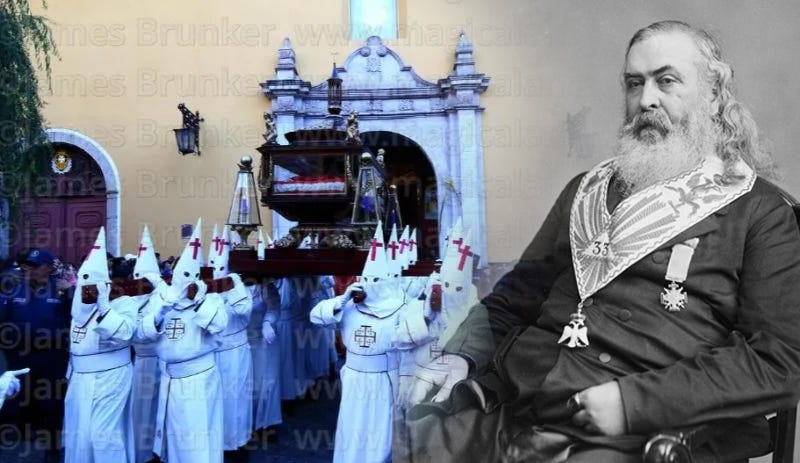
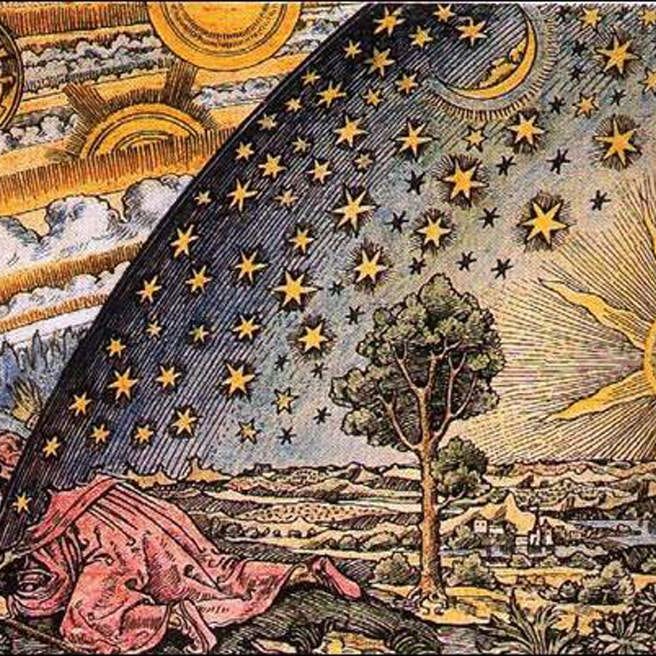
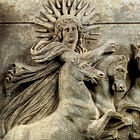
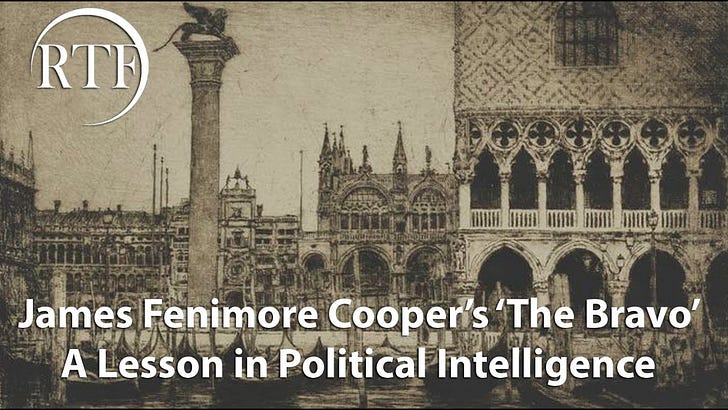
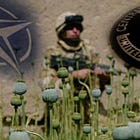
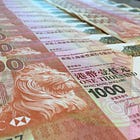
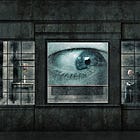
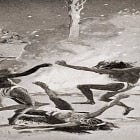

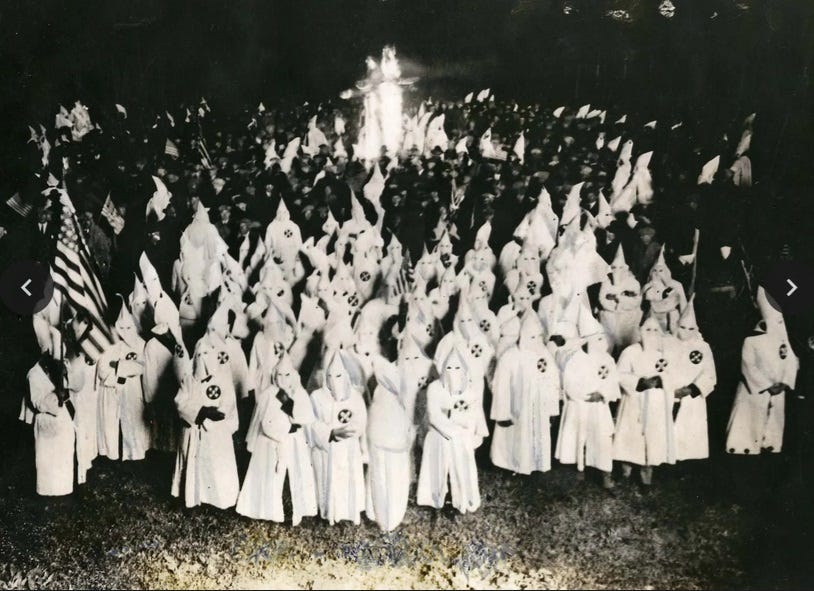
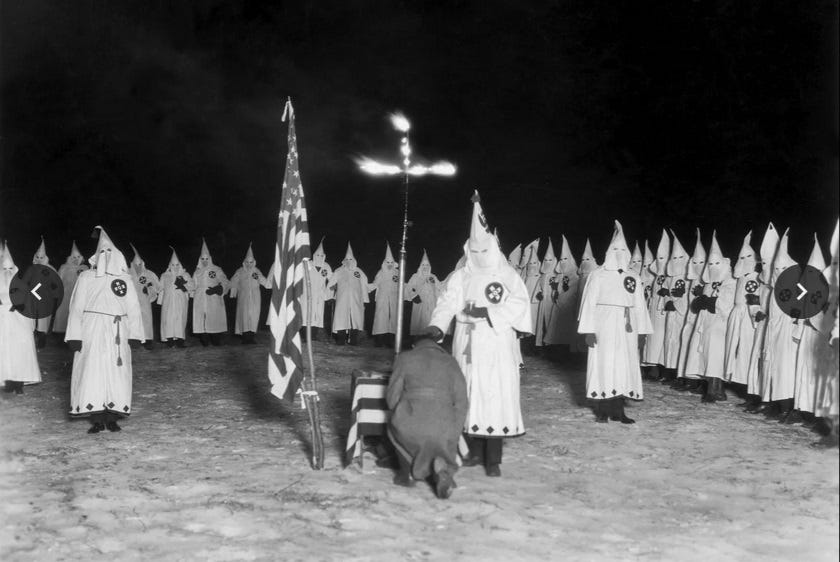
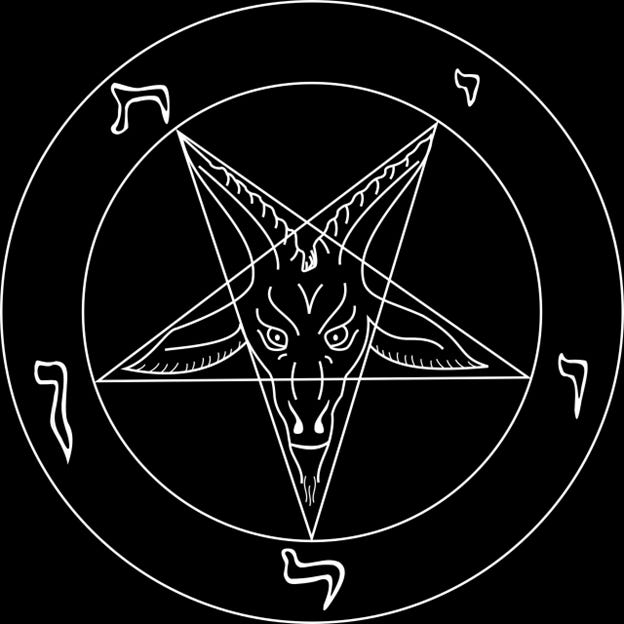

Why is it I always feel smarter and better informed after reading, probably because I am. Thanks and ready to tackle your book, The Empire on Which the Black Sun Never Set! God Bless!!!
History repeats. A manufactured crisis, a crusade response that always goes way too far.